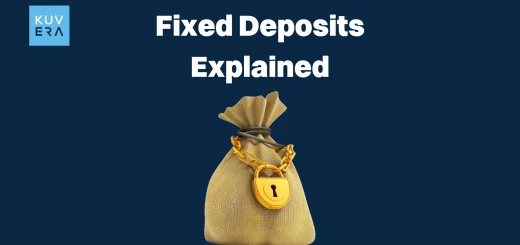What is Sensex?
Mr. Deepak Mohoni, a stock market expert, coined the term Sensex, which is a combination of Sensitive and Index. The Sensex is essentially an index that represents the Bombay Stock Exchange (BSE), which was founded in 1875. The stock exchange lacked an official index until January 1, 1986. At the time, the Sensex was used to assess the performance of the Indian market. The Sensex is made up of 30 prominent stocks that are generated from sectors and are actively traded on the exchange market. The Sensex accurately depicts the movement of the Indian stock market. If the Sensex rises, it indicates a general increase in share prices, whereas a fall in the Sensex indicates a general decline in share prices.
The S&P BSE Sensex may be used to identify stock market booms and collapses. The BSE and S&P Dow Jones Indices formed an agreement to compute the Sensex on February 19, 2013. The Nifty is the other index calculated in India for the National Stock Exchange.
The Sensex index is made up of the 30 largest and most frequently traded stocks on the BSE, and it serves as a barometer of the Indian economy. The Sensex is one of India’s oldest stock exchange indices. Investors use the Sensex to track the general growth, development of specific industries, and ups and downs of the Indian economy.
How are these 30 companies selected?
In general, each company must meet the following four criteria in order to be considered for inclusion in the SENSEX:
- Has to be listed on the Bombay Stock Exchange (BSE)
A company must be listed on the Bombay Stock Exchange for at least one year in order to qualify for inclusion in Sensex. It cannot be a component of Sensex if it is not listed on the BSE.
- The company must be large or medium-sized
A large-to-midsize market capitalization is required for the company to be eligible for inclusion in SENSEX. Due to the existence of this criterion, only the best and largest companies may be included in the SENSEX index.
- Shares with high liquidity
A company’s stock must have a high level of liquidity in order for it to be taken into consideration for inclusion in SENSEX. Simply said, buying and selling that specific stock should be simple. Additionally, as this liquidity is a result of the company’s underlying business quality, it also serves as a screening criterion to eventually only allow those firms with high business quality and thus high share liquidity. Another requirement for a company to be included in the SENSEX is that its primary business operations must generate a substantial share of revenue. Depending on the type of business the company is in, many companies have been divided into several sectors based on their primary activity.
- The company’s sector weight
Sector balancing is another important factor, meaning that the SENSEX members must maintain the sector’s balance mostly in accordance with the Indian equities market. Every sector is assigned a certain weight for any given index, which reflects the economy. For instance, the highest weights for various indexes are often assigned to financial services. Therefore, even after being admitted to the list of the 30 companies included in SENSEX, every company must inevitably preserve the balance of the sector to which it belongs. Additionally, each component of the SENSEX has a separate weight, which is determined by free-float market capitalization.
The 30 largest and busiest stocks on the BSE make up the Sensex, which serves as a barometer for the Indian economy. One of India’s oldest stock indices is the Sensex. Investors use the Sensex to track the general expansion, the growth of specific industries, and the ups and downs of the Indian economy.
List of 30 Stocks comprising the BSE Sensex
| COMPANY | NSE Code | MARKET PRICE(Rs) | MARKET CAP.**(Rs m) |
| ASIAN PAINTS | NSE: ASIANPAINT | 3,471.70 | 3,330,047 |
| AXIS BANK | NSE: AXISBANK | 741 | 2,268,546 |
| BAJAJ FINANCE | NSE: BAJFINANCE | 7,271.00 | 4,381,413 |
| BAJAJ FINSERV | NSE: BAJAJFINSV | 1,685.00 | 268,147.00 |
| BHARTI AIRTEL | NSE: BHARTIARTL | 759.60 | 4,144,041.00 |
| DR. REDDYS LAB | NSE: DRREDDY | 4,185.70 | 696,074.00 |
| HCL TECHNOLOGIES | NSE: HCLTECH | 919.20 | 2,494,401.00 |
| 2,261.55 | 4,124,339.00 | ||
| HDFC BANK | NSE: HDFCBANK | 1,414.00 | 7,787,827.00 |
| HINDUSTAN UNILEVER LTD | NSE: HINDUNILVR | 2,673.80 | 6,282,126.00 |
| ICICI BANK | NSE: ICICIBANK | 858.5 | 5,926,476.00 |
| INDUSIND BANK | NSE: INDUSINDBK | 1,174.20 | 888,993 |
| INFOSYS LTD | NSE: INFY | 1,398.90 | 5,958,524.00 |
| ITC LTD | NSE:ITC | 335.60 | 4,128,981.00 |
| KOTAK MAHINDRA BANK | NSE: KOTAKBANK | 1,809.00 | 3,582,587.00 |
| LARSEN & TOUBRO LTD | NSE:LT | 1,843.60 | 2,588,888.00 |
| MAHINDRA & MAHINDRA | NSE: M&M | 1,240.00 | 1,541,559.00 |
| MARUTI SUZUKI | NSE:MARUTI | 8,762.00 | 2,646,825 |
| NESTLE INDIA LTD | NSE: NESTLEIND | 18,672.00 | 1,800,274.00 |
| NTPC LTD | NSE:NTPC | 159.10 | 1,542,255.00 |
| POWER GRID CORP OF INDIA | NSE: POWERGRID | 205.3 | 1,074,045.00 |
| RELIANCE INDUSTRIES LTD | NSE: RELIANCE | 2,394.00 | 16,188,390.00 |
| STATE BANK OF INDIA | NSE:SBIN | 538.00 | 4,801,441.00 |
| SUN PHARMA | NSE: SUNPHARMA | 897 | 2,152,203 |
| TATA STEEL LTD | NSE: TATASTLPP | 98 | 118,004 |
| TATA CONSULTANCY SERVICES LTD | NSE:TCS | 3,021.90 | 11,339,331.00 |
| TECH MAHINDRA LTD | NSE: TECHM | 1,024.80 | 991,367.00 |
| TITAN CO LTD | NSE: TITAN | 2,607.00 | 2,314,414.00 |
| ULTRATECH CEMENT | NSE: ULTRACEMCO | 6,203.00 | 1,790,415.00 |
| WIPRO LTD | NSE:WIPRO | 399.50 | 2,283,278.00 |
What is BSE?
Bombay Stock Exchange was founded in 1875 and is situated on Dalal Street in Mumbai, India. With a speed of six microseconds, it is Asia’s first and quickest stock exchange.
Equities, mutual funds, derivatives, debt instruments, and currencies are all traded with efficiency and transparency through the BSE. Along with trading, it offers other services including risk management, clearing and settlement, and investor education.
By offering a venue for capital raising, BSE has contributed significantly to the development and shape of the Indian capital markets. Over 250 small and medium-sized businesses use it as a trade platform. Through BSE StAR MF, it also offers mutual fund services. The biggest mutual fund platform in India is also there. For a private offering of debt securities known as BSE Bond, BSE also offers an open electronic book mechanism method. India INX, the country’s first foreign exchange, is also present there.
The widely used BSE stock index is known as the Sensex. It is among the indices that is most often used and monitored. Additionally, BSE Sensex trades on EUREX and the exchanges of Brazil, Russia, China, and South Africa in addition to other countries (BRCS nations).
BSE Sensex objectives
- To assess market fluctuations
No other index equals the BSE SENSEX in representing market movements and feelings because of its lengthy history and widespread acceptance among individual investors, institutional investors, international investors, and fund managers. As a result, it is frequently used to characterise the mood of the Indian stock market.
- Fund Performance Benchmarking
The presence of blue chip businesses, together with the broad and balanced industry coverage, makes SENSEX the appropriate benchmark for fund managers to assess the performance of their funds.
- Index-Based Derivatives Products
The BSE SENSEX is used by small investors, institutional investors, and money managers for a variety of objectives. Because SENSEX includes top firms from all major areas of the economy, it is thought to be the most liquid contract in the Indian market and is likely to have a majority market share.
How Sensex is calculated ?
Prior to September 1, 2003, Sensex employed the weighted market capitalization technique; however, from that day, it switched to the Free Float Market Capitalization methodology. The technique is the same for all significant indexes worldwide. The performance of the 30 main stocks that were chosen is a direct reflection of the index’s level.
Free-Float Market Capitalization = Market Capitalization * Free Float Factor
Free Float is the percentage of the company’s total shares issued that is immediately accessible for trading in the market. The promoters’, government’s, etc., shares are not included.
Let’s look at an illustration to help with understanding: If a firm has 100 shares, of which 30 are held by the government or the promoters and the remaining 70 are freely traded by the general public, then the free float factor for those 70 shares will be 70%. The company’s value is described by the term market capitalization. The price of a stock is multiplied by the total number of shares the company has issued to establish market capitalization.
- The 30 stocks chosen for the Sensex based on predetermined criteria are included.
- Every one of the 30 companies’ market capitalizations is calculated.
- For each of the 30 companies, the Free Float Market Capitalization is calculated.
- The overall Free Float Market Capitalization is calculated by adding the Free Float Market Capitalizations of each of the 30 enterprises.
- Sensex is calculated using the formula: (total free float market capitalization / base market capitalization) * base index value.
- The base year used to calculate the Sensex is 1978–1979; although the base figure is static, it must be adjusted. The basic market capitalisation, as per BSE, is to be Rs. 2501.24 crore.
- The index’s initial value is 100.
Therfore, Sensex is equal to the free float market capitalisation of 30 chosen firms divided by 25041.24 crores* 100.
(The free float market capitalization of 30 chosen firms is totaled, 2501.24 crores is divided by it, and 100 is multiplied by it.)
How to trade on BSE Sensex?
Both a demat and a trading account are required in order to trade (buy or sell securities) on the BSE. The shares will be kept in dematerialized or electronic form via a demat. Another similarity between a demat account and a bank account is that, depending on the transaction, the securities are either credited or debited. A Depository Participant (DP) who is registered with Central Securities Depositories Limited (CSDL), National Securities Depository Limited (NSDL), or both is where one may create a demat account.
Online sales and purchases of securities will be made easier with the help of a trading account. As one cannot directly acquire shares from the stock exchange, the next step is to register with a broker or brokerage platform. The stock exchange and the trader are connected through stockbrokers, who are financial middlemen.
Trading on the BSE requires a bank account, a PAN card, a trading account, and a demat account. Numerous businesses provide both trading and demat accounts. Traders can utilise their services to do business on the NSE, BSE, or both.
Conclusion
The value of the Sensex over time may be used as a barometer for market behaviour, as well as to compare investments, benchmark portfolio performances, and analyse Index Funds, Index Futures, or Index Options. It is used by analysts, investors, and traders to predict how the economy will behave over the long term and how it will respond to local and international political and socioeconomic events. As a result, anxious eyes are glued to the sensex’s oscillations throughout COVID-19, which led to the greatest fall in its history on March 23, 2020, when it fell by 3,935 points.
FAQs
-
What is the Sensex in simple terms?
The Bombay Stock Exchange’s Sensex index measures the combined value of the 30 stocks of listed firms (BSE). The performance of the Indian economy is reflected by these stocks, which are owned by the biggest companies in India.
-
Where can I start making stock market investments?
To invest in the stock market, you need to have a foundational understanding of the Sensex, trading, stock investments, etc. An account with a registered broker and a Demat are also necessary for stock trading.
-
How do Sensex and Nifty differ from one another?
A abbreviated form of “Sensitive Index” is “Sensex,” while Nifty stands for “National Fifty.” In comparison to the Sensex, which consists of 30 chosen stocks from the top 30 firms, the Nifty consists of 50 picked equities from the top 50 corporations.
-
How Sensex is calculated?
The Sensex is calculated using the formula (total free-float market capitalization/base market capitalization) * Base index value. 1978–1979 is utilised as the basis year, while 100 is the base value.
Interested in how we think about the markets?
Read more: Zen And The Art Of Investing
Watch/hear on YouTube:
Start investing through a platform that brings goal planning and investing to your fingertips. Visit Kuvera.in to discover Direct Plans and Fixed Deposits and start investing today.
#MutualFundSahiHai #KuveraSabseSahiHai!











